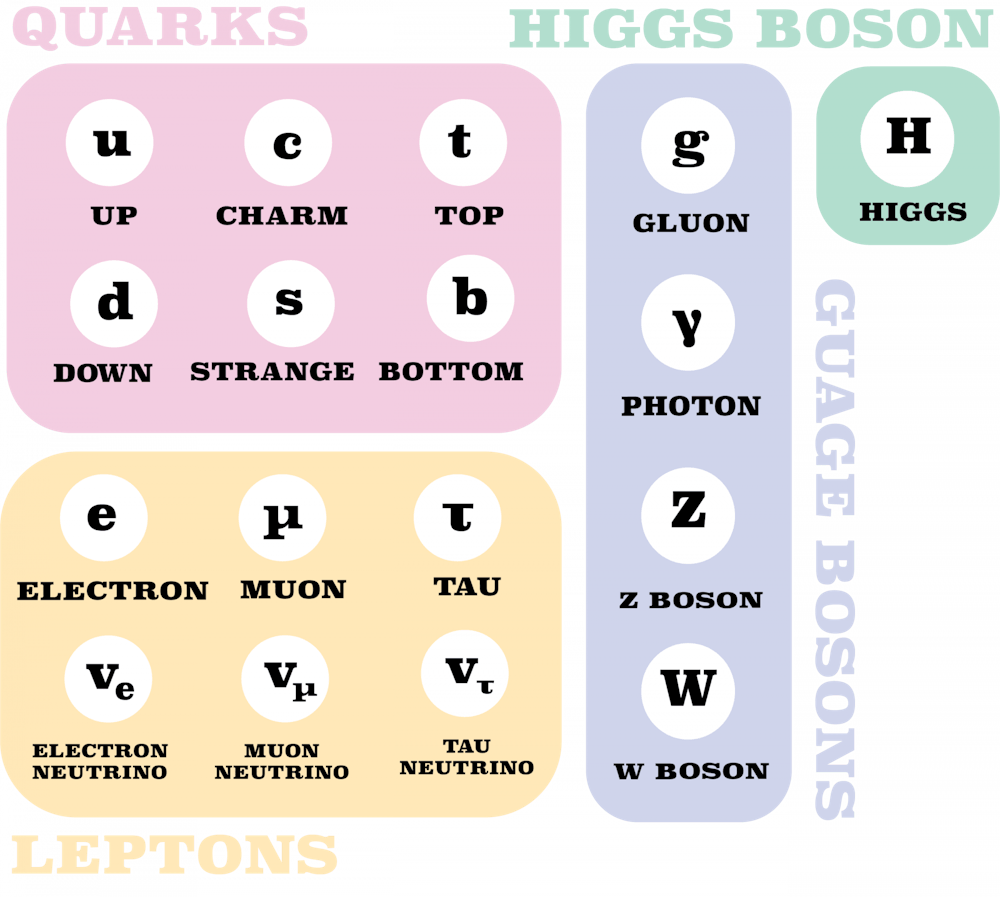University physicists are beginning to make their mark on two multi-million dollar experiments in particle physics by contributing their research analyses to experiments with the Fermi National Accelerator Complex — Fermilab for short. These experiments, called the Muon-to-electron Conversion Experiment, or Mu2e, and an additional neutrino experiment called NOvA, have the potential to drastically change what is known within the field of particle physics today. While NOvA is underway, Mu2e experiments are scheduled to begin in 2023.
Through the Fermilab experiments, the field of particle physics — which concerns itself with studying the most minute components of matter and their interaction — is likely to undergo major sources of discovery. Composed of a seven-particle accelerator series, Fermilab provides beams of particles to various physics experiments. The lab has been home to cutting-edge physics research for over 50 years.
“There are many experiments at Fermilab, and U.Va. has a long history of contributions to these experiments,” said Craig Group, associate physics professor and scientist involved in both projects. “Personally, I was an employee at Fermilab before I came to U.Va., and even before that my PhD thesis was on a Fermilab experiment.”
In the summer of 2007, the University physics department wrote an expression of interest to get involved with Fermilab, as well as a letter of intent in the fall. The Department of Energy approved the proposal in November 2009. The University first received funding in 2010, and the experiment has been in construction since 2016. Since then, the project has amassed around 245 scientists and engineers currently working on Mu2e from 40 institutions and six different countries.
“We are still in the construction stage, which will last for another year and a half,” said Craig Dukes, physics professor, head of the Institutional Board and head of the Cosmic Ray Veto Group. “The detector will be installed in 2022 and we start running the experiment in 2023. Mu2e is a $270 million endeavor, and not only one of the major projects of Fermilab, but one of the flagship experiments in the world of elementary particles physics.”
Dukes explained that the field of elementary particle physics has already developed a standard model to describe the subatomic world using particle accelerators. Even though this model has had the most success so far, it still fails to address dark energy, dark matter and the the asymmetry between matter and antimatter within the universe.
Mu2e’s goal is to prove a particle called a muon can convert into an electron — a process that cannot be explained within the standard model.
“What we are looking for is equivalent to searching for a few grains of sand that are different from all the others on all the beaches and deserts on the earth,” Dukes said. “Should we find even one unambiguous event, it would be a paradigm-changing discovery,”
To maintain accuracy and precision within this experiment, University physicists are tasked with building particle detectors that count naturally occuring muons in space, a project known as the Cosmic Ray Veto. Through this process, the final count of muons will only include those that are man -made, and there will be less background data that could interfere with experimental results. In total, scientists will need 83 detector modules to surround the particle accelerator and minimize any errors to be produced in the collection of data.
Alongside Mu2e, University scientists are currently working on the running experiment NOvA whose construction was completed about four years ago and is measuring neutrino properties better than any experiment conducted in the past. Studying neutrino properties is important in explaining why the universe and its particles look and behave in the way they do.
“It is a long-baseline neutrino experiment — this means there are two detectors that are used to study how the properties of a neutrino beam change as the propagate,” Group said. “We have a ‘near’ detector at Fermilab about one kilometer from the beam source, and a ‘far’ detector in Ash River Minnesota about 800 kilometers away.”
Through these experiments, the University is also able to offer mass opportunity for undergraduate involvement, such as through fourth-year College student Ben Barton, who has been working on the Mu2e experiment for a little over two and a half years. Students such as Barton see the value and importance of this research within the field of particle physics today. Barton explained that if the muon is observed to convert to an electron, it will guide new experiments in physics. Even if the project does not observe that conversion, he said, it will still inform physicists on the plausibility of new theories.
“Mu2e will substantially contribute to our understanding of how the universe works at a fundamental particle level,” said Barton.







